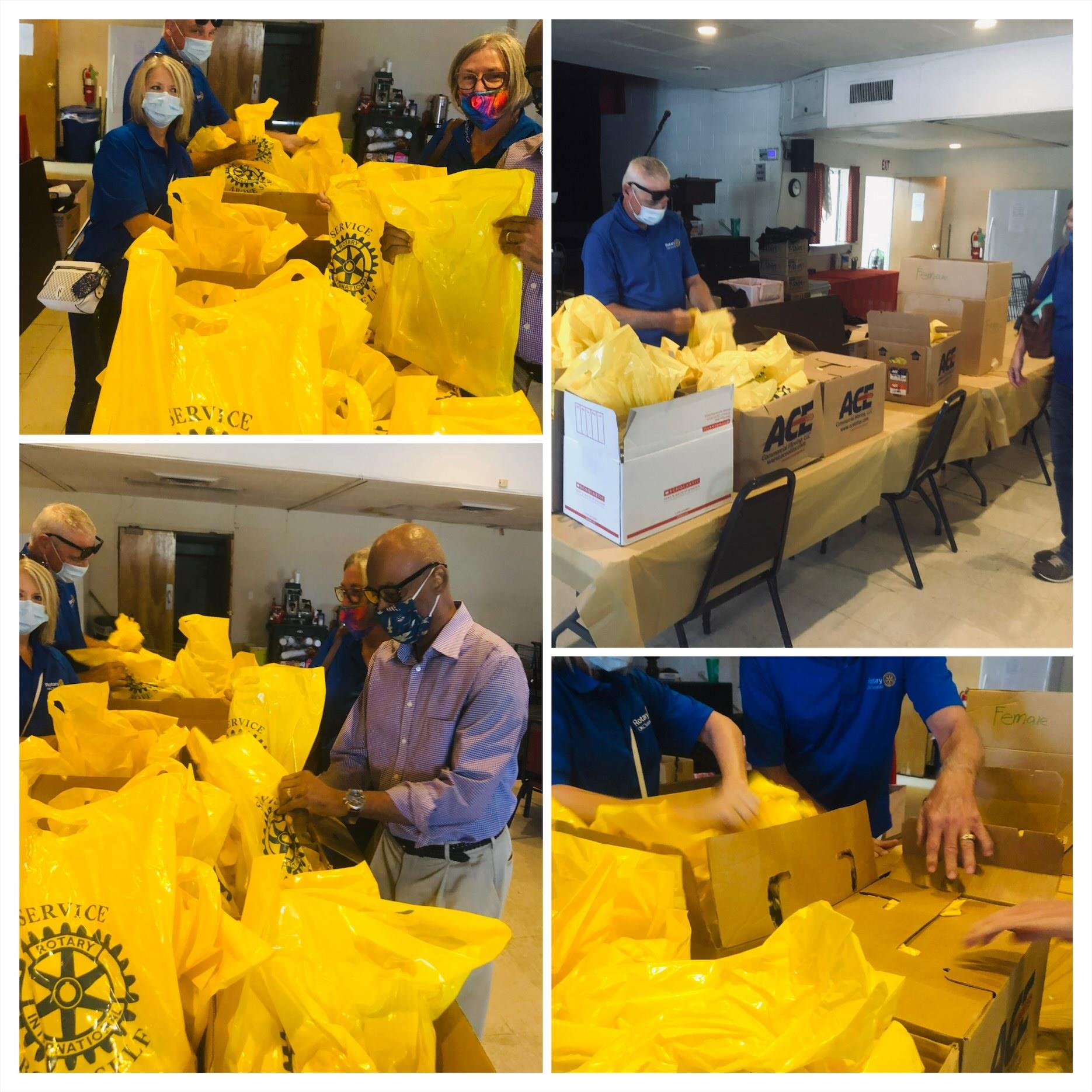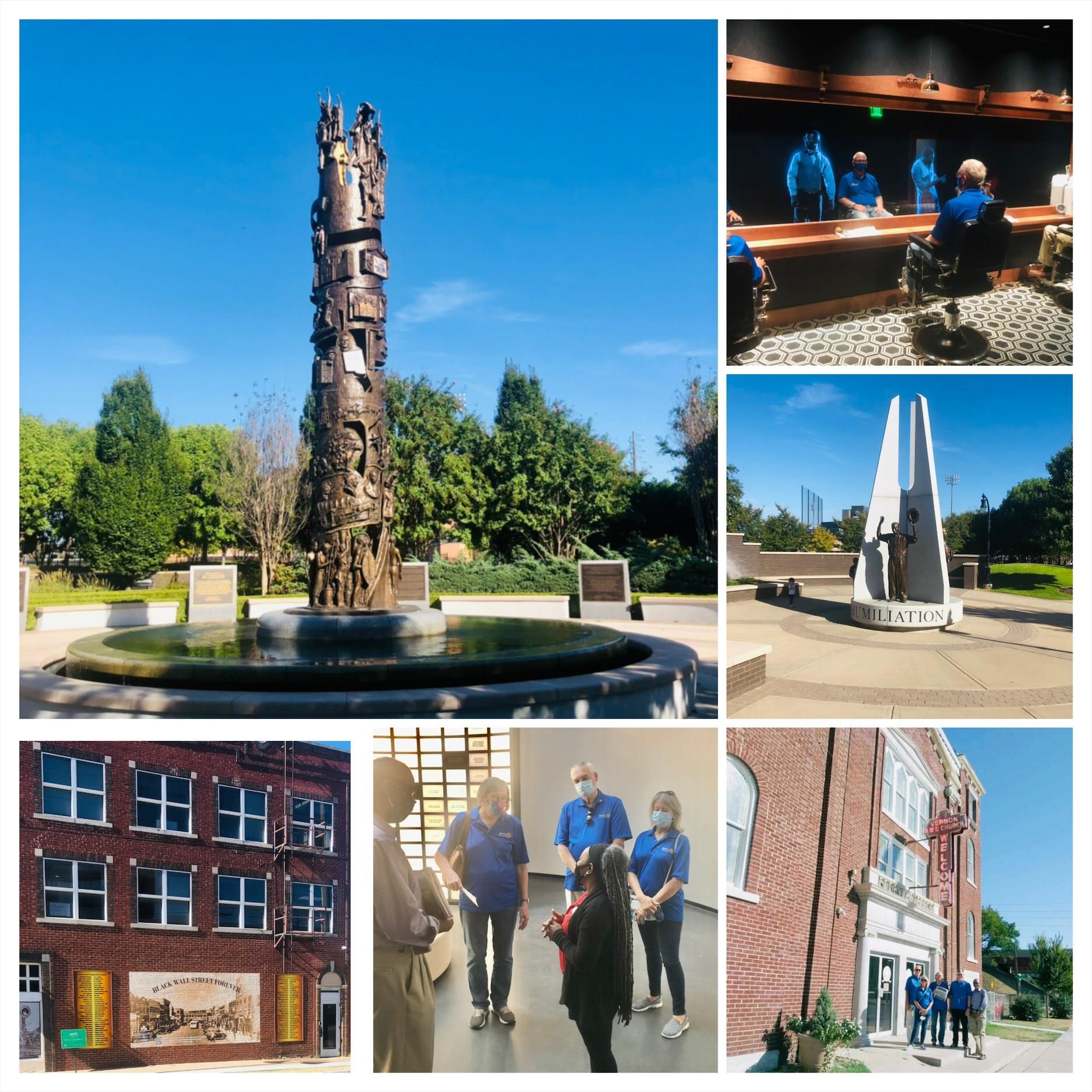The OKC Sunrise Rotary Club made a life-changing visit to Tulsa recently to conduct a service project and also to visit the Greenwood District, the site of the 1921 Tulsa Race Massacre. The service project involved using our weekly “Sunshine Dollars” to purchase supplies to prepare 100 personal hygiene bags to be delivered to the Vernon AME Church — one of the only structures to survive the massacre – for use in their food distribution ministry in the community. After purchasing the supplies, we enlisted the help of students from F.D. Moon Middle School who, along with their teacher and our member, Felix Linden, volunteered their time to fill the bags for delivery to the church. We then took a group of vehicles to Tulsa to deliver the bags to the church and then explore the Greenwood District.
If you are like me, you were never taught about the Tulsa Race Massacre in school. If you were, it was typically referred to as the “Tulsa Race Riots”, making it seem much different from the stark reality of the events that transpired in 1921. Our tour started with a visit to the Greenwood Cultural Center across the street from the church. There, we watched the video “Tulsa Burning” which chronicled the prosperity of Black Wall Street and the Greenwood District, the horror of May 31 to June 1, 1921 and the aftermath — all while looking through large windows across the barren expanse of what had formerly been the vibrant Greenwood District.
From there, we walked past the Mable B. Little Heritage House, the former home of Sam & Lucy Mackey, which, although destroyed in the massacre, was moved and rebuilt — brick by brick — at its current site in 1925 to provide an example of the former affluence of the area. We then walked Greenwood Avenue, noting the markers placed in the sidewalks memorializing the various black-owned businesses that existed in 1921, including the site of the original Dreamland Theater, which is now the path of the interstate highway that was built over portions of the Greenwood District.
We next toured “Greenwood Rising” the interactive museum built to memorialize the history of the area and the events of 1921. There was a portion of the original train tracks that separated the white and black portions of Tulsa. There were videos of first-person interviews with massacre survivors. There were before-and-after photos showing street scenes in 1921 -- before the massacre -- and how the same sites look today. There was a very interactive storefront called “TC’s Barbershop” in which visitors can sit in authentic barbershop chairs and listen to holographic barbers talk about the hopes, dreams and activities of people living in the Greenwood District. Finally, there was a Commitment Space where visitors are asked to make personal and actionable commitments to racial reconciliation. Before heading some, we walked to the John Hope Franklin Reconciliation Park, a block west of Greenwood. Upon entering it, you immediately see three larger-than-life bronze sculptures representing actual pictures from the 1921 riot: Hostility - A man fully armed for assault; Humiliation - A man with his hands raised in surrender; and Hope - Maurice Willows, Director of the Red Cross holding a baby born June 1921, immediately after the massacre. Across from the sculptures is The Tower of Reconciliation, a 26 - foot tall memorial tower which depicts the history of the African American struggle from Africa to America - from the migration of enslaved men, women and children with Native Americans on the Trail of Tears, the slave labor experience in the Territories, the 1st Kansas Colored Volunteer Infantry that won the Battle of Honey Springs – to statehood, the immigration of free African Americans into Oklahoma, and the All-Black towns and Greenwood. Surrounding the Tower is a labyrinth – a contemplative walking path which was a very therapeutic remedy after such an emotional tour.
I highly recommend a tour of this portion of Tulsa. This is a story that everyone needs to hear and from which we all need to learn.


